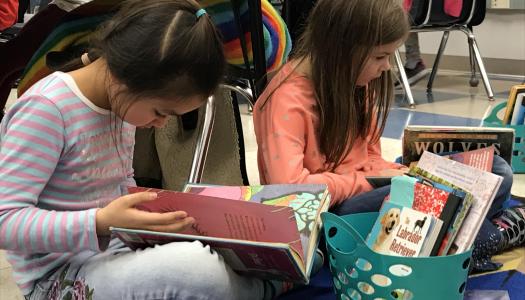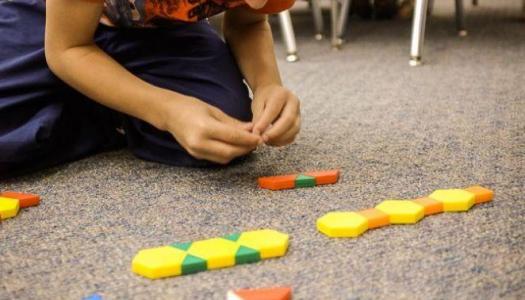Teaching and Learning Time Savers
Join Our Community
Access this resource now. Get up to three resources every month for free.
Choose from thousands of articles, lessons, guides, videos, and printables.
.jpg) Teachers often feel pressed for time, but they can be confident that the routines of Independent Learning and Collaborative Learning maximizes the time available. Here are some ways that the efficient use of time is built into these routines.
Teachers often feel pressed for time, but they can be confident that the routines of Independent Learning and Collaborative Learning maximizes the time available. Here are some ways that the efficient use of time is built into these routines.
Three Ways to Engage with a Text: Beginning readers or students learning English sometimes feel frustrated because, they say, they cannot read. They might not be sure how to use their time constructively during Independent Learning.. Learning the Three Ways to Engage with Text can change all that. By showing children how to engage with the pictures and retell the story in addition to reading the words, teachers give them valuable opportunities to engage with text. That engagement helps readers use the time productively to focus on their books. It gives their teacher precious time to work with small groups and individuals.
I PICK: When readers know how to choose a good-fit book, they can select wisely. They vet the book based on their purpose for reading, interest, comprehension, and knowledge of the words. Through I PICK, readers save time because they have an assortment of texts on hand that they can understand and enjoy. They do not have to return to the classroom library to search haphazardly for another book or take their teachers or classmates away from their important work. With a good-fit book in hand, they are all set for Independent or Collaborative Learning. Keeping good-fit books close at hand in book boxes means that those texts are readily accessible to readers. Having a selection of good-fit books—including interesting choices such as graphic novels, magazines, and poetry—by their side helps readers get right down to the fascinating work of reading.
Building Engagement: The routines of Independent and Collaborative Learning take into account the way that learning builds. Whether students are 6 or 16, they need to build engagement incrementally. Recognizing this developmental process, teachers realize when students have given all that they have and call them back together once engagement is lost. Often teachers create charts to graph engagement that display how students are moving toward their goal. Concentrating on the minutes of engagement they have built encourages readers to keep going.
10 Steps to Teaching and Learning Independence: When students are independent, they use their own time responsibly and respect the time of others. The 10 Steps to Teaching and Learning Independence provide teachers with a protocol that can be used inteaching any routine or behavior throughout the school day. This approach trains students to be self-reliant and accountable. The 10 Steps convey a sense of urgency about what is to be learned and provide opportunities for students to build egagement and practice. They also afford a time for students to reflect on their progress with the target behavior.
I-Charts: When everyone knows what to do and how to do it, no time is lost. I-Charts set forth expectations for student behaviors, ranging from how to transition to the carpet to how to line up. Their guidance gives students time to do what is really important: growing as readers and as writers!
Brief Focus Lessons: Created to follow a brain compatible teaching structure, brief focus lessons are short burts of instruction. Designed for the length of the lesson to be compatible the children’s ages, these lessons each target one teaching point. By chunking instruction in short intervals that keep children engrossed, teachers save the time spent by redirecting children who have given all that they have in terms of attention.
Share: When a learning block in literacy or math or other area concludes each day, students are excited about theier learning and are eager to share. By formalizing a 5–10-minute share, the teacher can honor their learning. In those designated minutes, students can describe their learning and what they have accomplished.
Seating: A cube chair, a wobble seat or cushion, or an exercise ball can meet students’ needs for movement while they work. These special kinds of seats can enable them to concentrate for longer periods of time. When students are comfortable, they can attend better to their learning.
Classroom Culture: A productive and respectful classroom is one where students work together and problem solve. They cooperate with each other and know that each classmate deserves respect. From the beginning of the school year, they learn to embrace the urgency of their learning. This understanding minimizes time wasted on minor disagreements that squander the time and energy of students and teacher.
Authentic Learning: It is important that children participate in authentic learning experiences because they helps students connect what they learn in the classroom to real-world situations, making their learning more meaningful and memorable. We do this using the six forms of authentic application: reading, writing, listeneing, speaking, viewing, and visually representing.
Classroom Library: The library is the crown jewel of the classroom. It should be stocked with a variety of texts suitable for the ages and reading tastes of students. In every classroom, readers look forward to book shopping for good-fit texts. To make book-shopping time enjoyable and streamlined, students can shop before school, during a designated time of the day, or at lunch. Time devoted to organizing the library is well spent because it makes it easier for children to find their good-fit books.
Purposefully Designed Classroom: When classrooms are well organized and contribute to the learning community’s sense of calm and orderliness, teachers and students save time. Everyone knows where everything is. A purposefully designed classroom is a beautiful thing!





